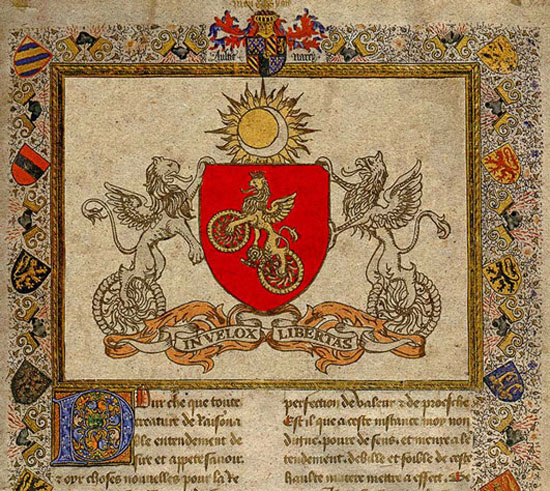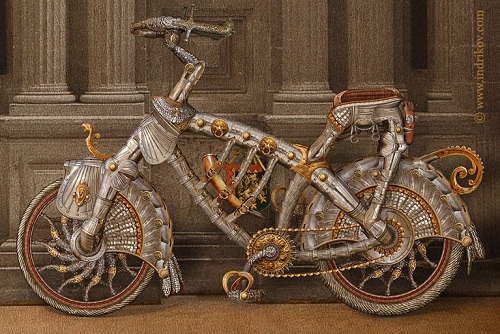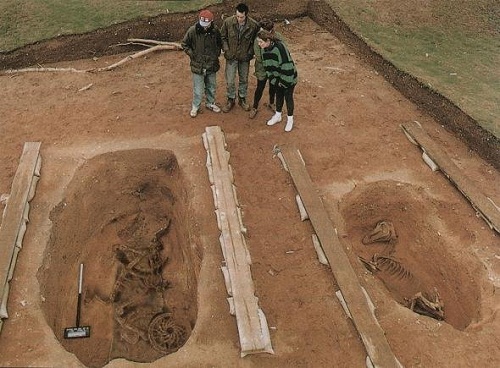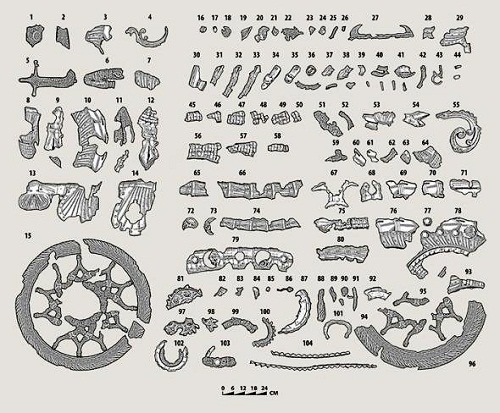Sunday, May 11, 2014
The bicycle, the engineering and science of the Middle Ages developed this mode of transport
Not 'invented' by Da Vinci
by Ferdinand III
The bicycle as a functioning tool was diagrammed in detail by Da Vinci at the end of the Medieval period. Some cranks believe his sketches are a hoax. I see no reason why they would be. Da Vinci's illustrations were based on what was already being used with some additional wishes. (His bicycle sketch has also been proven authentic [here]). Many of Da Vinci's sketches are of course, simple renderings of everyday life, they are not all inventions or futuristic ideas.
In any event Da Vinci certainly did not invent the concept of the bicycle. Sketches, drawings and references to pedal-powered transportation had existed for hundred of years. As improvements were made from the 10th century onwards in relation to motion, gears, physics and in the manufacture of steel, metal and other alloys, it is not incredible that people would have experimented with pedal motion to move faster locally in an economy that was linked by both trade and culture, far and wide. Efficiency and productivity were major medieval concerns.

[Da Vinci's bicycle sketch, a fake according to many]
Unlike a number of other medieval inventions, the bicycle was not a creation of the Church or monks. The private-market bicycles may not have been that elegant or light in construction, nor widely used. Many like Fontana's beast would have been reasonably crude and quite likely uncomfortable. Vulcanized rubber and other tire-related inventions make the modern bicycle a pleasure to ride. Flat roads paved with asphalt also help.
In any event such a vehicle necessitates a range of cerebral and physical innovations. The ancient world was not scientific, no scientific-method, mode of experimentation, or concepts around hypothesis proof, existed. They would never have conceived of a motion-machine such as a bicycle. Slave economies don't generate inventions or the usage of technology to enhance productivity. They simply use human muscle, and improving the life of the peasant is not even an afterthought.
Cognitive concepts to build a bicycle which only existed in medieval Europe.
Knowledge of:
-Perpetual motion-machine
-Physical force, mass and velocity
-Managing velocity
-Transmitting force to a motion-machine [pedals, chains]
-Rods, gears
There is no chance that any of the ancient cultures would have built the bicycle. Science, math, an understanding of physics and motion were only developed in Medieval Europe by Christians who employed the Roger Baconian ideal of using experimentation, harnessed to math and observation, to produce modern science.
In a coat of arms dating from the early 1400s in France; we have the rather incredible line, “IN VELOX LIBERTAS”, meaning Velocity makes you free, or Swiftly into freedom. A griffin, or winged-lion is portrayed on the emblem, seated on a fully developed modern-looking bicycle.

[Source]
There is a claim that a steel bike, using a lighter steel alloy was built in the 12 century and uncovered recently in France. [see here] Discovered in 2008, the French believe it might have looked like this:

The dig;


Whether the French discovery is valid or not, and there seems little reason to doubt its authenticity, it is clear that bicycles emerged during the Medieval period. This gives us an insight into the impressive grasp of mechanics, physics and laws of motion that the Medieval culture possessed.